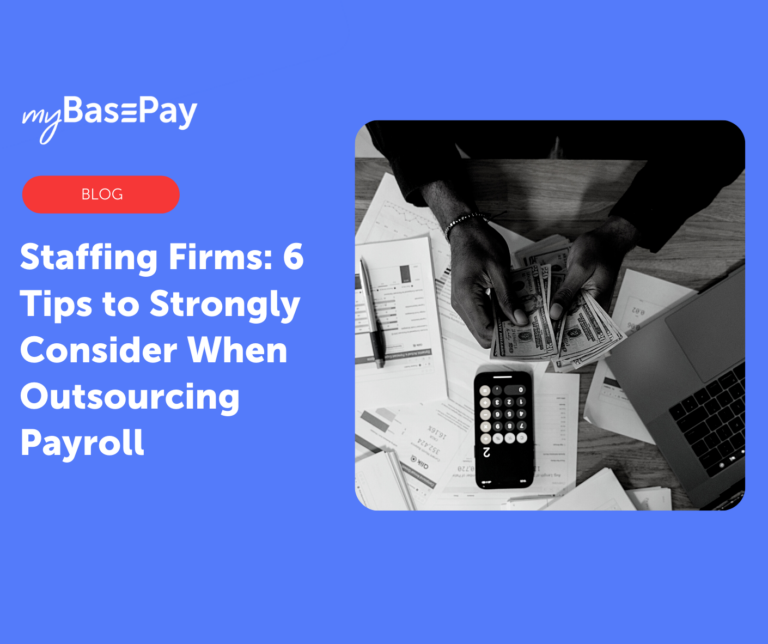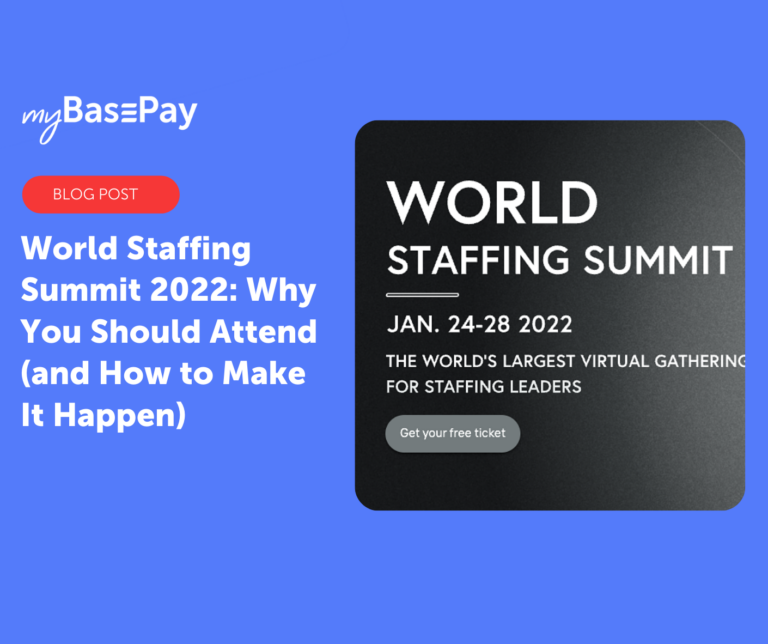Staffing Firms: 6 Best Practices for Making the Right Hire (the First Time Around)
While staffing firms are often primarily focused on helping other businesses fill their open positions, growing your team is going to be necessary, too. The right hire can bolster your team’s productivity and help you fulfill client projects more effectively than ever.
On the other hand, a bad hire could be a significant setback for your firm, especially in its early growth stages. Estimates have pegged the cost of a bad hire as anywhere from 30 percent of the individual’s first-year salary to an incredible $240,000.
These expenses aren’t always easy to quantify. Still, they can be felt in onboarding and training expenses, the drain on your team’s productivity and morale, potential losses from poor service, and even lost time managing a poor employee.
Making a hire to grow your staffing firm is something you should get done right the first time. This doesn’t have to be overwhelming — following some essential best practices will help you move forward confidently.
-
Don’t Rush
There’s an essential truth behind the adage “slow to hire, fast to fire.” Far too many staffing firms end up hiring a less-than-stellar employee simply because they’re in such a rush to fill an open position. Merely getting a warm body into a chair will not get the desired results for your company. Quite often, this could lead you to hire someone who is under-qualified or a poor cultural fit.
A 2017 survey from CareerBuilder found that 30 percent of employers who felt they had made a bad hire did so because they felt “pressured to fill the role quickly.” While urgency is undoubtedly necessary, it shouldn’t force you into hiring someone who isn’t a good fit.
-
Develop a Standardized Process
As with so many other areas in business, developing a standardized process is key to making quality hiring decisions. A study from Glassdoor found that a company was five times more likely to make a bad hire without a standardized interview process.
A standardized process makes life easier for recruiters while also providing a fair experience to candidates. Asking the same questions to each interviewee makes it easier to objectively identify red flags or determine if an individual is a good fit — both in terms of skills and culture. This also ensures that job requirements, company culture, and other crucial elements are communicated to each candidate during the interview.
-
Use Behavioral-Based Questions
Behavioral-based questions ask for concrete examples of a candidate’s abilities and mindset in previous jobs or hypothetical scenarios to better understand their perspective. Asking such behavioral questions will make it easier to identify candidates who are a solid cultural fit.
In an interview on our Ivy Podcast, Arran Stewart, co-founder and CVO of Job.com, gave this example: “We all understand that we work a nine to five, but […] we need to commit you that you might have to go out of your comfort zone on certain scenarios. So we’ll ask questions related to that, like, ‘If you were faced with this scenario and it was a Sunday morning, and you notice that […] there was an issue with the tech system, would you ignore it till Monday or would you get to work and try and resolve it? And would you raise awareness to the executive team?’”
As Stewart explained, while a candidate is likely to answer “in the way that they know you want them to answer,” this setup emotionally commits them to your company’s expectations, which have now been established in the interview.
-
Always Check References
Over the years, there have been countless stories of individuals who landed high-profile positions that they were woefully under-qualified simply because no one bothered to fact-check their resumes. From university executives to the government, many people have been able to fool their future employers.
Of course, the truth eventually comes out — often when the individual’s performance reveals apparent discrepancies. This isn’t a good look for any company, but especially not for a staffing firm. It doesn’t matter how impressive someone may appear on paper or in the interview itself. You must always do your due diligence by checking with former employers and other references.
-
Don’t Diminish Diversity
Diversity is more than a buzzword. It’s a critical factor for growth in staffing and any other business. Diverse companies are 35 percent more likely to outperform their industry average. Having various management can result in a 19 percent boost in revenue. Diversity has also been linked with improved decision-making and innovation.
Organizations often fall into the trap of hiring people who look and think as they do. In reality, diversity, equity, and inclusion should be a central focus of your hiring practices. Diversifying your team will enhance your ability to fulfill client projects successfully.
-
Look for Growth
The rise of freelancing means that many individuals’ career paths look much different from those in the past. Because of this, it’s okay to be open to candidates who don’t necessarily have a traditional background. But if you’re hiring for a non-entry-level position, you should be able to identify evident growth and progress over the course of a candidate’s career.
Career progression — either through rising the ranks at a former employer or developing new skills — is key to identifying a candidate’s potential. An upwardly mobile candidate is more likely to grow into their new position and be willing to put in the effort to make up for any gaps in knowledge or experience. They will bring that same growth mindset to your staffing firm.
While making a quality hire can be a time-consuming process, getting it right the first time will pay big dividends in the long run. Rather than needing to go through the hiring process again after a candidate doesn’t pan out, you can enjoy rapid growth thanks to your new hire’s contributions.
With a quality staff in place, you will be well-positioned to deliver excellent staffing results to your clients — in part because you’ve perfected the process internally.
Author: Cesar Romero
Cesar is the Head of Marketing at myBasePay, where he’s responsible for overseeing the company’s content marketing, community, and partnerships strategy. He also co-hosts The Ivy Podcast where he interviews executives from Fortune 500 companies on executive leadership. When he’s not helping startups with marketing and community strategy, you can find him paying it forward by serving as a mentor for leading organizations like StartingBloc, Hive, and Global Citizen Year.






